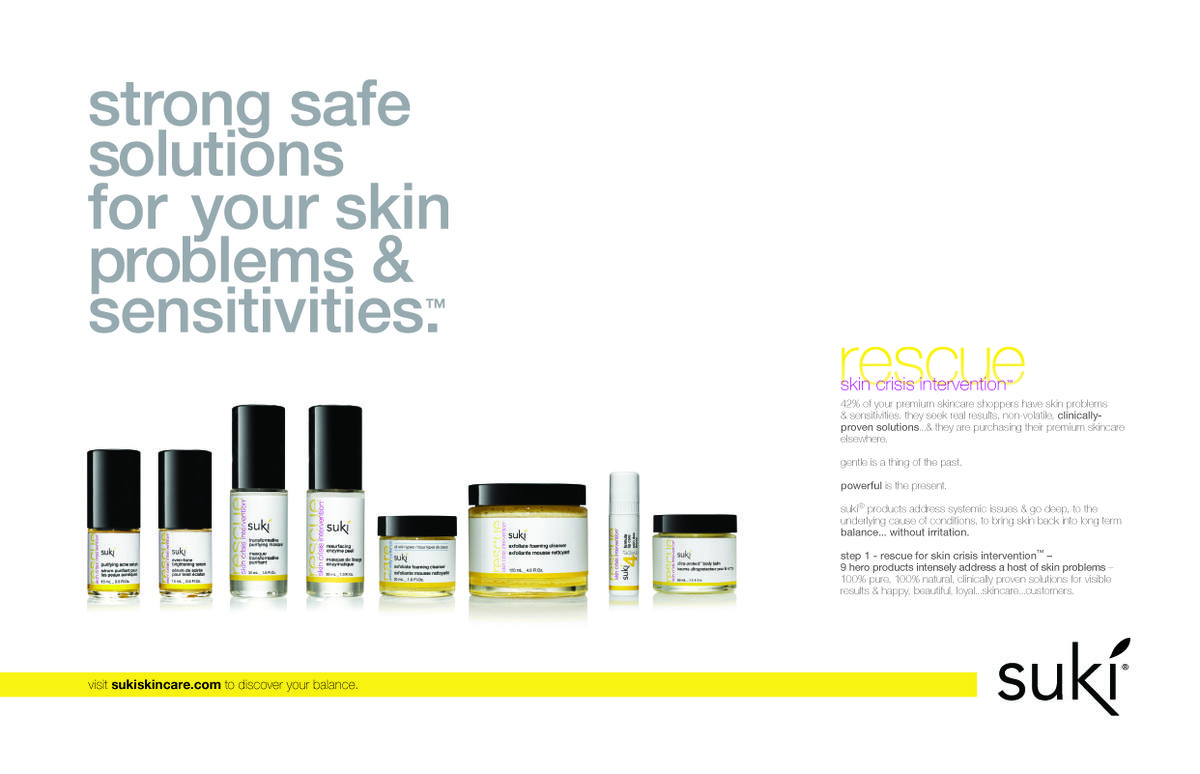There are thousands and thousands of natural health and beauty aids (HABA) on the market, so a SKU must be pretty special to stand out from the crowd. WholeFoods recently spoke with several players in the personal care market about what makes a best seller and how best to merchandise it. Here are some tricks of the trade that you can implement in your store today.
2014 Best Sellers
Before proceeding, the following are the products that companies interviewed for this piece say have been their top sellers in 2014:
• Resveratrol Q10 Night Repair Cream and Super Goji Peptide Perfecting Cream from Andalou Naturals.
• Aubrey’s Honeysuckle Moisture Intensive Conditioner and Aubrey’s Revitalizing Serum.
• Firming DMAE Moisturizer and Hydrating Night Crème with Hyaluronic Acid from derma e.
• The Green Brush, 100% Bamboo Handle and 100% Bamboo Bristles from The Hair Doc Company/Bass Brushes.
• Mill Creek Biotin 16 oz Shampoo and Biotene H-24 Shampoo for thicker fuller hair.
• MyChelle’s Remarkable Retinal Serum and Advanced Argan Oil.
• Herbal Daily Shampoo and Herbal Daily Conditioner from Nature’s Gate.
• Everyone 3-in-1 Soap and Everyone 3-in-1 Lotion, both in Coconut + Lemon from EO Products and EO Shower Gel and Hand Soap in French Lavender.
• suki’s exfoliate foaming facial cleanser and nourishing day cream.
• Xlear Sinus Care Spray and Spry Tooth Gel.
In addition, information from Home Health 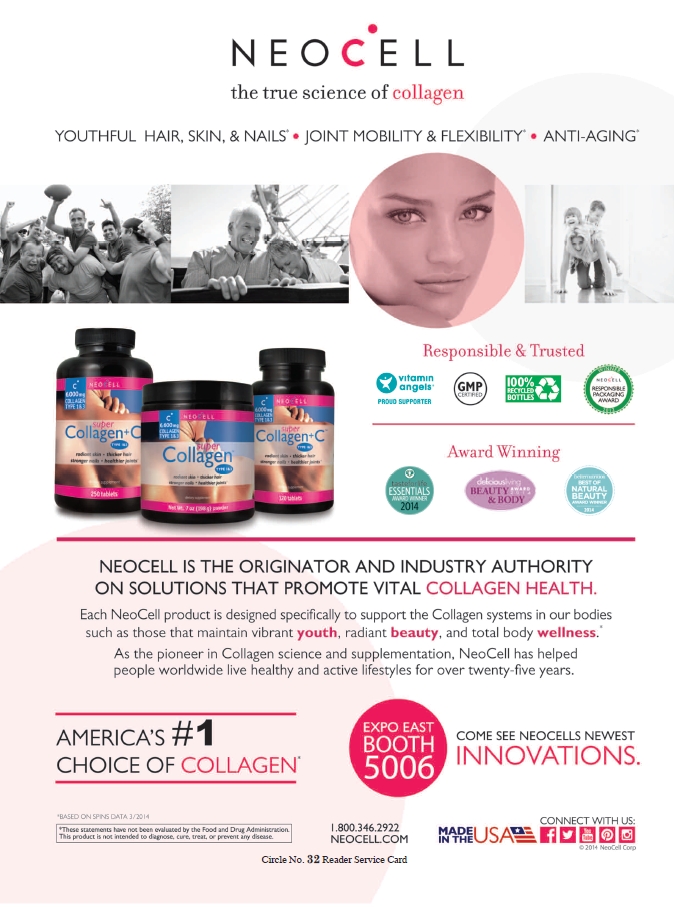 suggests the sensitive skin segment is an area to watch. According to Dorie Greenblatt, director of sales/marketing for Home Health, Ronkonkoma, NY, “In recent years, the prevalence of sensitive skin has been increasing and it now potentially affects one out of every two women, your primary shopper.”
suggests the sensitive skin segment is an area to watch. According to Dorie Greenblatt, director of sales/marketing for Home Health, Ronkonkoma, NY, “In recent years, the prevalence of sensitive skin has been increasing and it now potentially affects one out of every two women, your primary shopper.”
She adds some recent data from SPINS (52 weeks ending May 18, 2014) showing very fast growth in this area. Says Greenblatt, “While overall skincare is growing at a healthy 9.2% [over the previous year], sensitive skincare is growing even faster…at a brisk 21% [since May 2013].” Home Health’s newly launched everclēn skincare line for sensitive skin has been part of this growth.
Suki Kramer, founder, president and product formulator at suki skincare, Northampton, MA, agrees with Greenblatt that shoppers looking for sensitive skin products are driving sales. “We redesigned the line in 2014 based on independent market research telling us who our core consumer is: the problem and sensitive skin consumer, meaning those with combination-skin issues, systemic imbalances and concerns of ingredient avoidance,” she states.
Sensitive skin products are especially important for the anti-aging segment, as evidenced by the success of MyChelle’s Remarkable Retinal Serum, says Sarah Eggenberger, vice president of product development at the company. The product is intended to reduce fine lines and redness, diminish age spots, lessen sun damage and more. “It has gained popularity because all skin types can use it, including sensitive,” she states. For more on sensitive skin trends, see page 50.
What’s Driving Sales?
Several common drivers are attracting shoppers to the aforementioned products and others like them. First and foremost, efficacy reigns king in this market. Karen Ress, executive sales manager for Aubrey Organics, Tampa, FL, says product performance—with legitimate visible results—sells a SKU.
Sometimes, performance is tied to innovation. For instance, Kramer says her line has a unique system (suki TLC technology) for its active ingredients that delivers them “deep into the derma but in a highly stable manner, in the form of peptides, for instance. The action is produced long term, working with your skin to create long-lasting results without the irritation associated with synthetic forms of the same actives we use (e.g., salicylic acid, vitamin C, collagen and glycolic acid).”
Performance claims that are proven with numbers strongly appeal to shoppers. Kramer says her company’s products go through third-party trials, and “outperform most synthetic products on the market at up to 84% improved radiance for participants. Both healthy-aging and anti-acne regimens were tested with outstanding results.”
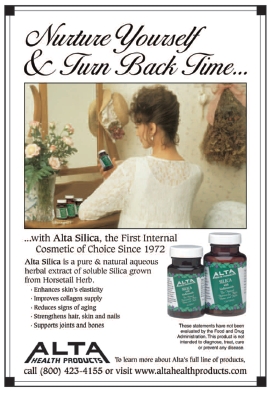 derma e, Simi Valley, CA, also does bench-marking studies of its products against department-store brands to make sure that its products “deliver an exceptional in-use experience,” says Jennifer Norman, vice president of marketing. “Then, we back the validity of our product claims with clinical and consumer testing.”
derma e, Simi Valley, CA, also does bench-marking studies of its products against department-store brands to make sure that its products “deliver an exceptional in-use experience,” says Jennifer Norman, vice president of marketing. “Then, we back the validity of our product claims with clinical and consumer testing.”
The takeaway message is that quality studies create consumer confidence in a brand. In fact, Greenblatt feels sensitive skin shoppers are drawn to the everclēn line in part because the products underwent clinical and dermatological tests to prove they are gentle enough for everyday use. Scientists used the latest scientific methods to test the line against placebos on women who said they have had sensitive skin. “Unless testing is done on the exact formulation that the consumer buys off the shelf, there is no way of knowing whether that product will be safe for a sensitive individual,” she feels.
Importantly, if you carry brands with data-backed products, be sure to educate shoppers about them. "Education and awareness in our category is growing every year," states Jessica Mulligan, vice president of sales and marketing for NeoCell, CA. "Consumers are becoming more versed in nutricosmetics (supplements that promote youthful skin from within) and Collagen has shown to be the stand out ingredient in this category." She believes this has helped her company's Super Collagen Powder become a top seller because it offers "clinically studied, therapeutic doses of bio-available Collagen at value-driven prices."
Along with performance, Ress says quality ingredients are also why shoppers purchase a certain item over another. A top-selling conditioner from her company uses two oils as its main ingredients to add “softness, manageability and sheen to hair, as it restores and hydrates.”
While quality is vital, some companies believe products must also have reasonable price points. In fact, price may be one reason why the EveryOne line has done well for EO Products; the multipurpose items and bulk size make them especially affordable for families and shoppers dabbling in healthy/natural HABA for the first time.
While intuition may dictate that hot, trendy items create buzz and sales, sometimes the best sellers are far from new. Rather, many top sellers in the category are those with a legacy. For instance, Norman says her company’s top two sellers have been around for years and have developed an ever-growing, loyal following. “Bottom line is that consumers trust us and know that our products work,” she states. “The formulas are truly premium-grade, designed with the very best ingredients to deliver the promised results.”
Another example of legacy is biotin. According to Rajeev Prasad, vice president of sales and marketing at Mill Creek Botanicals, Castle Rock, CO, his company was the first to use biotin in topical hair care products, so consumers associate the ingredient with the company.
A similar concept is working for Xlear, Inc., American Fork, UT, a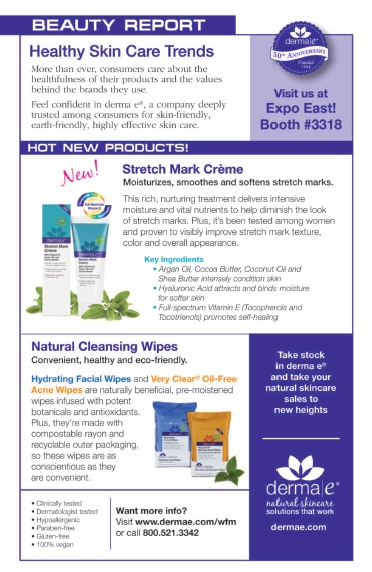 firm well known for xylitol. Its Sinus Care Spray is a top seller because shoppers feel the company is a go-to source for this ingredient, and they like the results they’ve had throughout the past decade: moisturizing, protecting and gently cleansing the sinuses and nasal passages. “Most of Xlear’s business comes from repeat customers that have tried and love the products. The positive testimonials are endless,” says Ryan Hogan, communications director at Xlear Inc. Meanwhile, the company’s Spry Kid’s Tooth Gel “is highly recommended by dental professionals because it protects and strengthens teeth,” he adds.
firm well known for xylitol. Its Sinus Care Spray is a top seller because shoppers feel the company is a go-to source for this ingredient, and they like the results they’ve had throughout the past decade: moisturizing, protecting and gently cleansing the sinuses and nasal passages. “Most of Xlear’s business comes from repeat customers that have tried and love the products. The positive testimonials are endless,” says Ryan Hogan, communications director at Xlear Inc. Meanwhile, the company’s Spry Kid’s Tooth Gel “is highly recommended by dental professionals because it protects and strengthens teeth,” he adds.
But “legacy” doesn’t mean formulations never change. The top sellers for Chatsworth, CA–based Nature’s Gate—the Herbal Shampoo and Conditioner—are some of the brand’s original products, launched 40+ years ago. The trick has been to keep up with the times while maintaining what shoppers love about them. “These products stood against the test of time and have evolved year after year, gaining momentum with a new audience and still proving to be our number one sellers,” states Terry Sarian, marketing brand manager.
Some of Aubrey’s most popular products also combine the old and the new. For instance, Rosa Mosqueta Oil is synonymous with the Aubrey line for many shoppers. Says Ress, “Aubrey’s Organic Rosa Mosqueta Rose Hip Seed Oil has been our signature ingredient since 1982. We were the first company to introduce this raw ingredient to the market in beauty care products and to the natural products industry. We are also first to get this ingredient certified organic.”
So, the company’s Honeysuckle conditioner, formulated with this oil as well as trendy argon oil, has been a popular choice, and Ress says it “has become one of the highly blogged about conditioners among the natural social media.”
Likewise, Susan Griffin-Black, cofounder and co-CEO of EO Products, Corte Madera, CA, says her company is well known for its French lavender essential oil. “Our French Lavender products have been a favorite among our customers since we started EO 20 years ago. And we have some very loyal customers and fans of these products,” she explains, as its top-selling shower gel and hand soap are newer products both in this classic scent.
Griffin-Black says these products are appealing to shoppers new to the healthy/natural HABA scene because of their simplicity, efficacy and scent. “It’s never diluted and is from the same plant species every time, meaning the scent is consistent year to year,” she adds.
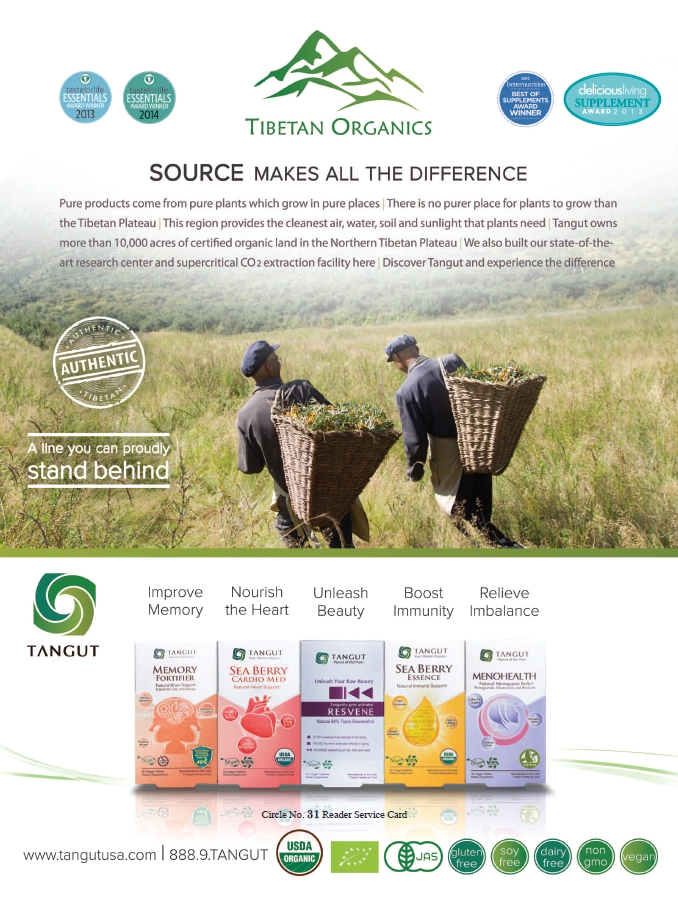 In addition, there’s the environmental factor to consider, which is a pillar in this market. This is part of the reason why Ron Weinstein, president of The Hair Doc Company/Bass Brushes, Chatsworth, CA, says his company’s brushes are so popular. “They are the most eco-friendly brushes ever made,” he believes.
In addition, there’s the environmental factor to consider, which is a pillar in this market. This is part of the reason why Ron Weinstein, president of The Hair Doc Company/Bass Brushes, Chatsworth, CA, says his company’s brushes are so popular. “They are the most eco-friendly brushes ever made,” he believes.
Shoppers are increasingly aware that any chemicals present in personal care products could negatively affect their bodies and the world around them. “Due to this, they have begun seeking more naturally based products, such as the ones we formulate at Nature’s Gate, to limit their use of harsh chemicals in the products they use on a daily basis,” Sarian believes.
Hogan has seen evidence of this, too, as consumers appreciate the fact that the xylitol used in the company’s Spry Kid’s Tooth Gel is 100% natural and derived from non-GMO corncobs “that would otherwise be a useless agricultural by-product.”
On Display
Merchandising is key for creating and maintaining a following for a given product, and this includes product placement. Weinstein says that his company’s brushes are sometimes positioned at checkout to increase visibility and drive sales.
There are other creative ways to enhance visibility. Norman believes double-facing best sellers, placing them on glorifiers and providing print material all make an impact on shoppers. She adds that a creative endcap not only helps a store show off its personality, but also signals to shoppers that it endorses a product.
Hogan agrees that smart displays are a “must” for successful retailing in the HABA category. He states, “The most successful marketing and positioning that our retailers have executed are placing our xylitol products at checkout stands and end caps...Additionally, peg board products and board displays right when consumers enter stores so they could find the product easily have yielded positive results.”
Mix it up, too, Mulligan suggests. She says a retailer her company works with created some beauty-from-within endcaps that paired items from grocery (like coconut water which improves skin hydration) with NeoCell Collagen. "It is refreshing and innovative to have departments team up for new initiatives," she states.
Meanwhile, Griffin-Black says that some of the most effective in-store programs for its products are testers: “It’s been a great way to introduce our brand to customers in a practical way.”
Greenblatt agrees, stressing that retailers should put out full-size product for testing. “We offer full-size testers on shelf as part of our in-store support program to help encourage interest and trial use,” she states.
Kramer also likes demos, and speaks of her company’s “suki challenge” in which staff demoing the line have customers try the company’s exfoliate foaming cleanser (product A) versus another exfoliate (product B). “It gives people a chance to experience the smell and feel of the product firsthand,” she says.
More creative ideas from Griffin-Black include customer giveaways of top sellers at retail and highlighting positive comments from shoppers about products. “We love when retailers feature customer reviews of our best sellers, and for these multipurpose soaps and lotions, having floor sales reps explain they can be used in various ways is helpful, too,” she states.
Customer comments go a long way, says Eggenberger. “Definitely word of mouth will always be the best way to highlight our top sellers because the buyers provide their anecdotal experience with the product.”
Another interesting idea comes from Prasad: cross-merchandise HABA products with supplements. “For example, someone buying biotin pills is recommended to use biotin shampoo for the best all-around results,” he states.
If products are non-GMO, highlight it, says Stacey Kelly Egide, founder and CEO of Andalou Naturals, Petaluma, CA, since this is such an important factor for shoppers deciding which products to buy. “A creative manager designed shelf tags, aisle invaders, and floor decals to call out our non-GMO point of difference. The impact was phenomenal,” she states.
Last, Sarian reminds retailers of the importance of aesthetics. A store she works with displayed the company’s products in a pop-up vanity to help shoppers envision what they’d look like in their bathrooms.
Creative and attractive displays make a big impact, according to Greenblatt. “It’s important to remember that these are ‘beauty care’ products…so, positioning them off shelf in an environment that promotes personal care and beauty is a great way to highlight natural skincare,” she states. WF
Published in WholeFoods Magazine, September 2014


